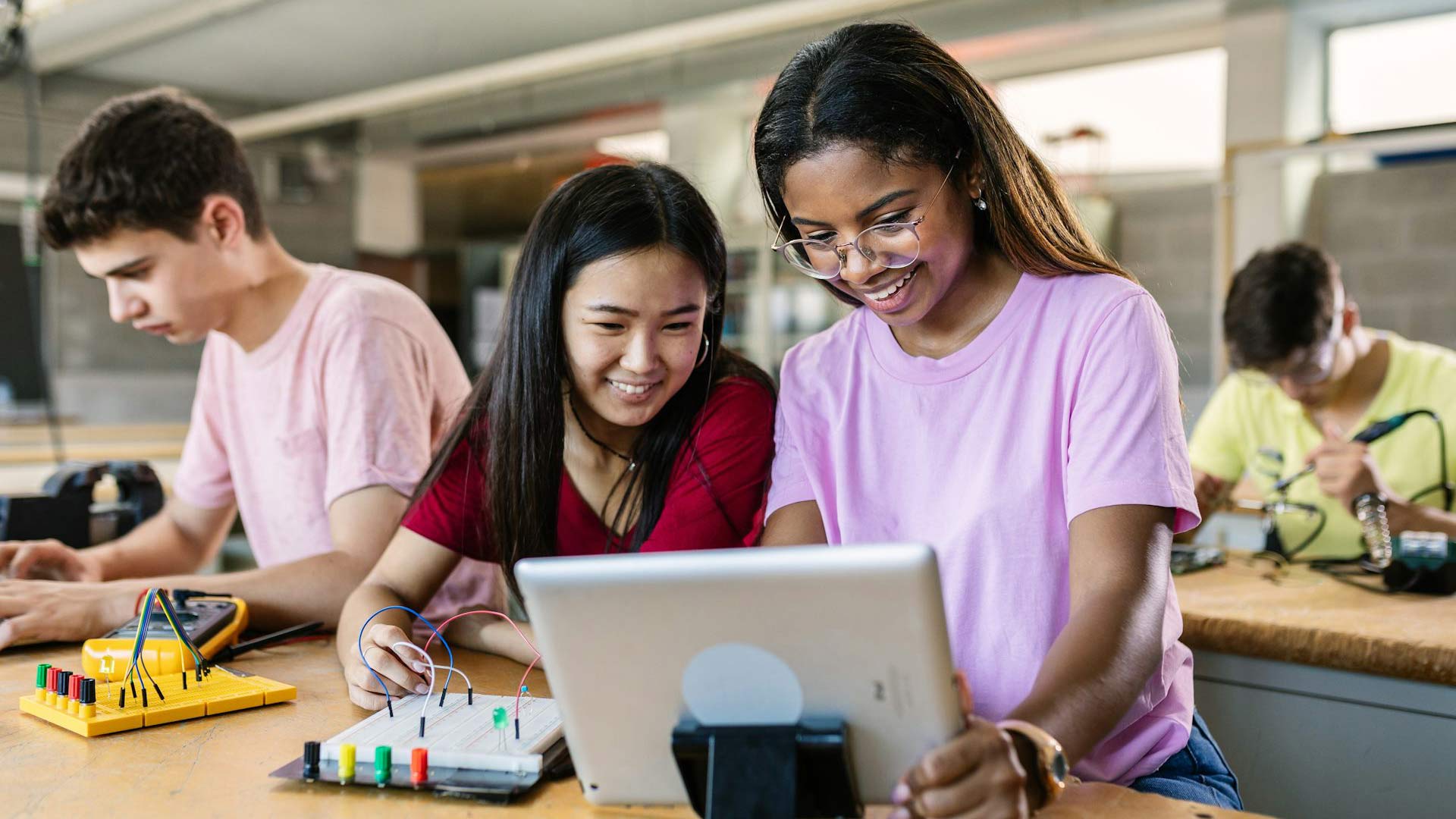Not too long ago, schools had an image of dusty chalkboards and tattered textbooks, but now, when we talk about modern schools and education, we can imagine interactive smartboards and tons of online resources.
Technology in schools, no doubt has greatly transformed the way education is provided in schools across the world. It has been reshaping how students learn and teachers teach. Today, knowledge is accessible anytime and anywhere.
In this article, let us have a look at different ways in which technology has revolutionized school education, and we will explore both the transformative as well as challenging aspects.
Making Knowledge Accessible
By breaking geographical and socio-economic barriers, technology has made education more accessible than ever. There are several online platforms operating at the global level that have made open access to high-quality courses helping students from around the world learn from the best irrespective of their location and financial background.
On top of that, technology also helps to serve various learning styles and needs. It provides tools like assistive software and interactive simulations that help differently-abled students learn efficiently. But still, the digital divide remains a huge challenge that highlights the need for equal access to technology and internet connectivity.
Redefining teaching methodology
Gone are the days of rote memorization and one-size-fits-all lectures. With the help of technology in schools, teachers are not able to transform classrooms into dynamic learning spots. Advanced multimedia tools are available like simulations and virtual labs that have transformed explaining techniques for complex concepts. This has improved the deep understanding and engagement among students.
Several personalized learning software and apps can easily adapt to students’ learning paces and needs helping them advance at their own time, schedule, and speed. Collaborative platforms and online communities connect students worldwide encouraging teamwork, cultural exchange, and critical thinking skills.
Though the integration of advanced technology and education has great potential to provide an enriched learning experience, it requires proper ongoing teacher training and change in instructional approach.
More advanced Communication and Collaboration
Technology also helps with seamless communication between students, teachers, and parents. It helps with real-time feedback loops through online platforms which facilitates personalized guidance and addresses any kind of learning gaps promptly.
Collaborative tools help students to work together on various projects and encourage teamwork and communication skills that are valuable beyond the classroom in the real world. Also, online communities help students connect across regions and cultures enabling global collaboration and cultural exchange. But online space can be dangerous and it becomes necessary for parents to keep proper vigilance among their child’s activities.
World of Information
Technology in school has created a world of information and the internet is the most important tool for that. It provides an expansive library at students’ fingertips. Several online resources offer a wealth of information that helps students build independent research skills as well as enhance their critical thinking. Students can explore diverse perspectives, verify information, and learn how to properly use the digital world responsibly.
Since the internet is loaded with information, both correct and incorrect, students must develop strong information literacy skills to distinguish between what is right and what is wrong. They must learn to identify the credible sources for the information they seek.
From instructor to guide
It is widely feared that technology will replace humans in their jobs, especially teachers once technology and AI become powerful. But the truth is they will not replace teachers, instead reshape their role. Traditionally, teachers are transmitters of knowledge, but with technology, they will become learning facilitators and guide students through personalized learning journeys.
Technology can help teachers curate online resources and offer personalized support. They can use technology to create engaging and interactive learning environments. To effectively integrate technology, it requires proper professional development of the teachers as well as a shift in mindset, and adapting to new tools and pedagogies.
Heading toward a brighter future
The introduction of artificial intelligence technology in the school education sector can personalize the learning experience even further which can customize content and pace according to individual’s needs. Virtual reality and augmented reality can provide a more immersive learning environment and bring remote destinations and historical events to life.
Blended learning models which can combine online and offline components can offer more flexibility and cater to various learning styles. However, ethical considerations regarding data privacy and responsible use of technology should be considered on priority as we move towards integrating AI into the world of school education.
Conclusion
Technology has a multifaceted and dynamic impact on the school education sector. Though it offers powerful tools to personalize learning, democratize access, and enhance collaboration, it becomes essential to address the challenges we discussed above so that it provides equal opportunity to everyone, and addresses ethical as well as data privacy issues.
As we move toward the future, embracing technology thoughtfully and responsibly becomes the highest priority to empower and transform learning and teaching experiences in school education.

